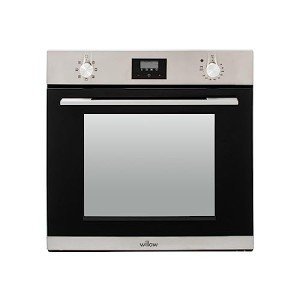The Rise of Built-In Ovens: A Seamless Approach to Modern Cooking
In modern kitchen areas, where design visual appeals blend effortlessly with performance, one appliance sticks out as a true game changer: the built-in oven. As homeowners and chefs alike continue to look for ingenious options that enhance their cooking experience, built-in ovens have actually become significantly popular. This article explores the benefits, considerations, and trends surrounding built-in ovens, highlighting why they are a vital feature in contemporary cooking spaces.
What is a Built-In Oven?
A built-in oven is a kitchen area home appliance developed to be integrated into the kitchen cabinetry of a kitchen area instead of standing alone. Unlike built in oven uk freestanding ovens, which can be moved and placed anywhere, built-in ovens been available in different designs and sizes to fit particularly within designated areas. Offered in single or double setups, these ovens offer a streamlined appearance that matches contemporary cooking area styles.
Advantages of Built-In Ovens
1. Space-Saving Design
Among the most enticing benefits of built-in ovens is their space-saving style. By incorporating the oven into cabinets, you can free up important counter and flooring space. This is particularly helpful in smaller sized kitchen areas, where maximizing room is essential. Built-in ovens can be installed at eye level, making them more accessible and minimizing the need to bend down.
2. Visual Appeal
Built-in ovens add to a smooth and cohesive cooking area design. Available in numerous finishes-- such as stainless-steel, black, white, and custom-made kitchen cabinetry-- they can mix seamlessly into the total design. This aesthetic appeal enhances the kitchen area's visual harmony and elevates the area, producing a modern-day and advanced environment.
3. Boosted Functionality
Lots of built-in ovens come geared up with advanced cooking technologies, such as convection cooking, steam ovens, and wise functions. These enhancements enable flexible cooking options, making it much easier to achieve professional-level results at home. Smart built-in ovens can even connect to Wi-Fi, making it possible for users to manage the oven remotely, receive notifications, and gain access to a range of cooking programs and recipes.
4. Enhanced Ventilation
Due to the fact that built-in ovens can be integrated with cooking area hoods and ventilation systems, they can help preserve much better air quality and minimize cooking smells. This is specifically substantial for those who love to cook with fragrant spices and active ingredients, as an efficient ventilation system can keep the cooking area comfortable and inviting.
5. Personalization Options
Built-in ovens use a large range of personalization alternatives to match private cooking designs and needs. From professional-grade appliances with several cooking modes to compact styles for smaller sized kitchen areas, property owners can select the oven that fits their particular requirements. Built-in Oven of producers also provide adjustable front panels, allowing you to match the oven's appearance to your kitchen cabinetry for a really unified look.

Factors to consider When Choosing a Built-In Oven
While built-in ovens have many advantages, there are necessary factors to consider to bear in mind before making a purchase:
1. Rate
Built-in ovens normally feature a greater price than their freestanding equivalents due to their style and setup requirements. It's crucial to aspect in both the cost of the oven and any extra expenses related to cabinets adjustments or setup.
2. Built-in Oven
Installing a built-in oven often requires expert help, specifically if you need to modify existing cabinets. Ensure that you think about any costs related to setup, consisting of labor and possible kitchen cabinetry adjustments.
3. Size and Dimensions
Before acquiring a built-in oven, determine the designated area precisely to ensure an appropriate fit. Built-in ovens been available in numerous sizes and configurations, so selecting one that lines up with your needs and kitchen design is vital.
4. Way of life and Usage
Consider your cooking practices and requires when picking a built-in oven. If you regularly host big events, a double oven may be more advantageous. On the other hand, if you have a compact cooking area, a single-wall oven might be enough.
Trends in Built-In Ovens
The kitchen home appliance market is constantly developing, and built-in ovens are not exempt from emerging trends. Some existing trends include:
Smart Technology Integration: With the rise of smart home technology, built-in ovens now typically include connection options. This enables users to monitor cooking progress and adjust settings through mobile apps.
Energy Efficiency: As sustainability becomes a concern, many makers are purchasing energy-efficient built-in ovens that decrease energy consumption while preserving efficiency.
Multi-functional Designs: Built-in ovens now provide functions such as air frying, sluggish cooking, and steaming, offering flexibility that satisfies a wide variety of cooking approaches.
Conclusion
Built-in ovens unquestionably represent a perfect mix of style, function, and convenience in today's kitchen areas. As more homeowners choose this modern-day service, the focus shifts to developing a cooking space that is as visually pleasing as it is useful. Whether you are constructing a brand-new home or remodeling your kitchen area, considering a built-in oven might elevate your cooking experience and change your cooking area into an elegant and functional haven. With an array of choices available and ongoing developments in technology, built-in ovens stay a standout option for both amateur cooks and culinary enthusiasts alike.
